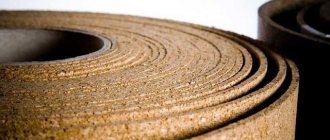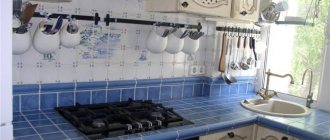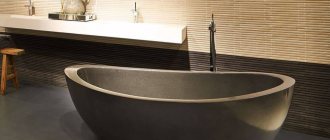Low tide is the window sill on the street side. It is made from materials that are resistant to the negative effects of precipitation and critical temperatures. Such materials are primarily aluminum
and
galvanized steel
.
Windows whose sills are made with high quality and reliability have a longer service life due to their timely drainage.
Aluminum castings
lightweight and safe, can be tinted
in various colors
to match the facade and the outside of the window itself. Before painting, they are degreased, and a special mounting film is applied over the paint, ensuring the integrity of the coating during installation.
Window sills made of galvanized steel
coated
with a polymer composition
. Apart from the fact that they are heavier than aluminum, there are no significant differences between these types of tides.
You see it every day, but you hardly pay attention to it. You pass nearby, but don’t even think about why he’s standing there. It's time to fix this and find out what the window sill at the window on the street side is called. Why is this thing outside the window needed and what are its main functions? Is it possible to do without a street window sill and what are the consequences?
The so-called slope at the window on the street side has a simple and logical name - drainage or simply - ebb . It is fixed almost at the very end of window installation. Installed to prevent water from accumulating in the recess between the wall and the window. Mounted at an angle.
The dimensions of the so-called external window sills are always individual. When placing an order or during self-installation, clear measurements are taken, down to millimeters. At the same time, a reliable foundation is strengthened under the ebb itself. Having found out what the iron window sill is called on the window side, we will try to reveal the meaning of the installation and mainly from what material it is made.
The need to install drainage from the street
Many people think that the low tide serves to allow rain to “drum” on it all night, to entertain the birds, or simply for beauty. Obviously this is not the case. It must be installed on each window to prevent moisture from getting onto the wall of the house and the windows themselves. Thus, saving from the formation of dampness and mold indoors.
The most important task is to prevent water from getting into the so-called gap between the frame and the wall. Definitely, an external window sill is a must when installing windows.
What material are drainage pipes made of? Which one is more durable?
There are two main types of window sills on the street side: iron and plastic. Each has its own advantages and disadvantages. So metal and plastic:
1) Resistant to any weather; 2) Do not require special care efforts; 3) Affordable; 4) There are different colors; 5) They provide the opportunity to produce the desired size.
Of course, iron ones are considered stronger, but plastic ebbs are almost silent. Metal window sills are on average twice as expensive. As, in turn, plastic ones are very difficult to find on sale.
PVC window sills
Plastic window sills are the most common option in city apartments. They are made from the same material as the window profile and have stiffening ribs to provide strength. There are air chambers inside the PVC profile, which makes the structure lighter but maintains strength.
Construction of a PVC window sill profile.
Advantages of PVC window sills:
- resistance to moisture and sunlight;
- high rates of heat and waterproofing;
- long service life - from 30 to 50 years;
- ease of care;
- low cost,
- strength and durability.
In addition to the advantages, this type also has a number of disadvantages. Thus, cheap materials may contain formaldehyde, fumes that have a bad effect on human health. There is also a load limitation - you cannot place heavy objects on window sills with a small number of stiffening ribs, or sit or stand on them.
Manufacturers of PVC profiles produce window sills in a wide range of sizes and colors, so it will not be difficult for the buyer to choose the right size and color for any window opening. In addition to the usual white, they can be painted in any color, as well as imitate natural materials with a glossy or matte surface.
Design options for PVC window sills
Step-by-step installation technology
The installation of the drip tide is carried out after the installation of metal-plastic windows, when they have already stood for several days, the mounting solutions and foam have already dried. All excess mixtures are carefully removed with a sharp screwdriver or a blade with a chisel. The dried polyurethane foam is cut off with a sharp knife so that there are no protruding nuances.
- According to standards, the ebb should penetrate the side walls by at least 2 centimeters. To do this, use a thin screwdriver or drill to carefully knock out even holes at the level of the future surface.
- Even if the product was made strictly according to the given technical parameters, a situation may arise that somewhere it still does not fit into the grooves. To do this, it is necessary to eliminate all interfering errors using a tool. It is advisable to start from the wall - carefully remove all construction debris from the work surface, knock down all protrusions, sweep away dust with a broom or brush. The window sill can be trimmed or wiped with a hacksaw or sandpaper, respectively. The main thing is not to scratch the surface, but to paint over all exposed metal with enamel of the appropriate shade.
- Once both the surface and the ebb are ready, you can proceed directly to installation. The wall on which the ebb will be attached needs to be slightly moistened with water. Polyurethane foam sticks much more easily to a damp surface - and it will be the main fixing agent. The window sill is carefully inserted into the prepared grooves - there will be punched strips on the sides, and on the side of the window there will be a niche specially created for low tide. The gaps should be minimal, the window sill should not move in them, but there is no need to grind in, because this will damage the enamel surface.
- The angle of inclination is set - it should be directed away from the wall so that the moisture drains directly to the ground. The horizontal slope is measured using a building level. The tilt in all directions is adjusted by plastic plates that move along the working surface depending on the desired result. The slope should be such that the exposed window sill can be pressed down with bricks wrapped in a rag. This will allow it to be securely fixed when the polyurethane foam expands.
- After the ebb is exposed and secured, the cavity under it is carefully filled with mounting foam - this will glue the slope and ensure the insulation of the window opening from moisture and drafts.
- After the tide has stood for several days, the bricks are removed, and all the seams around are rubbed and puttied. After completion of all work, the ebb is completely ready for use.
Wooden window sills
This type of window sill was popular before the advent of polyvinyl chloride. However, the fashion for everything natural is returning again and window sills made of natural wood are again in demand in the construction market.
When choosing this option for arranging a window space, you first need to pay attention to the type of wood from which the window sill will be made. The most reliable solids are oak, maple, chestnut, ash and mahogany. There are simpler and cheaper options made from Siberian larch or pine.
Before becoming a full-fledged window sill, wood goes through a number of production processes - it is dried, polished and the surface is treated with oils and wax. To reduce the cost, some manufacturers do not use a whole array, but produce multilayer glued products. If the processing technology is followed correctly, then such a window sill will be only slightly inferior in performance properties to solid wood, and will cost much less.
The main advantage of such products is their appearance and environmental friendliness. In terms of physical properties, wood is much inferior to plastic - it is afraid of moisture and requires special care. In addition, the topcoat will have to be reapplied every few years.
Design options for wooden window sills
Work zone
To organize a comfortable workplace, place the computer desk close to the windowsill. There is a lot of natural light here, so it will be a good corner for a schoolchild. Complete the composition with a spacious storage system in the form of cabinets and shelves built into the sides of the opening.
If you need to set up a mini home office by the window, simply extend the window sill. Here you can also organize a creative workshop or a corner for handicrafts. A similar solution – a window sill-desk – will help to “unload” the interior and get rid of unnecessary furniture structures.
Window sills made of chipboard or MDF
Window sills made of chipboard or MDF are made by pressing and gluing sawdust left over from woodworking production. For decoration, a polymer film or wood veneer is applied to the compressed and glued material. Such panels have a large number of colors and can imitate the surfaces of natural materials. The panels can be cut to the required size, and the ends of such a window sill can be closed with special plugs
Both of these materials are considered suitable for making window sills, but there are certain nuances:
1. A chipboard window sill will not withstand direct contact with moisture on the surface - with prolonged contact it will begin to swell and deform.
2. A product made from MDF is a little stronger and more resistant to moisture, but direct contact should also be avoided.
These materials also have advantages:
- low price,
- durability with proper care and protection from water,
- ease of installation,
- abundance of shapes and colors.
Design options for window sills made of chipboard
Preparatory work
Usually, drip tides are installed together with new metal-plastic windows, then the installation is carried out by the same team, and this is already included in the cost of the contract. But the need for installation may be due to several factors, such as replacing an old, damaged sill, installing a metal window sill on a previously installed window (it can be either wooden or metal).
In any case, to independently install an external drip sill, the first thing you need to do is make or buy one. To purchase, you can contact specialized stores if your sizes are typical.
If you are unable to take measurements yourself or require a product of complex shape, then it is best to contact specialists who will competently take the necessary measurements and take into account all the nuances at the installation site.
Immediately before installation you will need:
- ready-made and available low tide; hammer drill or impact drill; hammer and chisel, sharp construction knife; broom or soft brush; sandpaper and a hacksaw for metal; building level, plastic pads.
Window sill made of artificial stone
Artificial stone is an excellent and not so expensive alternative to natural stone. In appearance it is practically no different from natural, and its physical and aesthetic properties are sometimes much higher.
It is made from mineral filler and binding polymer resins, and various dyes are used to add color. As a result of this technology, a monolith is obtained that is not inferior in characteristics and appearance to natural stone. The high viscosity of the material completely eliminates the risk of cracks and chips. In addition, the process of installing a window sill made of artificial stone is much simpler - working with it is not so labor-intensive, and its weight is much less.
Unlike natural stone, artificial stone is not afraid of spilled liquids, dyes, mechanical stress and ultraviolet rays. This window sill does not require special care; it is important to remember only one thing - it cannot be washed with powdered detergents, as the surface can be scratched.
Design options for window sills made of artificial stone
Lunch group
In the kitchen, a work surface is often set up near the window; it is also an ideal place for a dining group. table near the windowsill will fit well into the design of a small kitchen . In this case, it is worth considering folding models, so if necessary, you can adjust the width of the tabletop.
If desired, the window sill in the bedroom can be converted into a dressing table, a lounger for tailed pets can be arranged near the window in the living room, and a mini greenhouse with exotic flowers can be organized in a room with a bay window, or vitamin greens can be grown.
Glass window sill
A glass window sill is a bold design idea that found its audience relatively recently and now more and more people are paying attention to this material. Using glass, you can create a unique window sill in a short time and without spending a lot of money.
Many people mistakenly believe that glass is an unreliable material that will shatter into fragments at the first impact. But this is absolutely not true; modern technologies make it possible to produce especially strong glass that is resistant to impacts, mechanical damage and scratches.
For the production of window sills, tempered glass with a thickness of 10–15 mm is used. Its front line is often made rounded, and the side parts are increased to 30 mm to maximize the massiveness of the structure and create a beautiful relief.
The advantages of this option include ease of installation, low cost, attractive and unusual appearance. The color palette is also rich - there are about 10 shades of glass on the market. In addition to plain glass, there are also colored glasses with unusual patterns and decorative elements and inserts.
Design options for glass window sills
Place to rest and sleep
If the room is equipped with a built-in sofa under the window, you can sit comfortably here with a book or laptop, admire nature (urban architecture) with a cup of tea. To do this, you just need to throw a mattress with decorative pillows on a wide stove.
a bed on the windowsill is also appropriate if high-quality thermal insulation is carried out and sealed double-glazed windows are installed. In this case, the original bed must be equipped with an orthopedic mattress of the appropriate size. Complete the sleeping area with a lamp, bedside table or shelf for storing “night” paraphernalia.
How to choose the right width?
The width of the window sill is selected based on functional considerations. To prevent window panes from fogging up, the window sill board is made wider than the window sill area by several centimeters.
Standard sizes of window sill slabs vary from 100 to 1000 mm (in 50 mm increments). The wider the window sill, the easier it is to adapt it to personal needs. Often, a wide window sill board serves as a kind of space decoration, being used as a table top, a platform for work and relaxation, as well as an area for placing indoor plants.
To calculate the width of the window sill, add 80 mm to the distance from the window to the inner corner of the wall - the optimal length of the window sill board.











